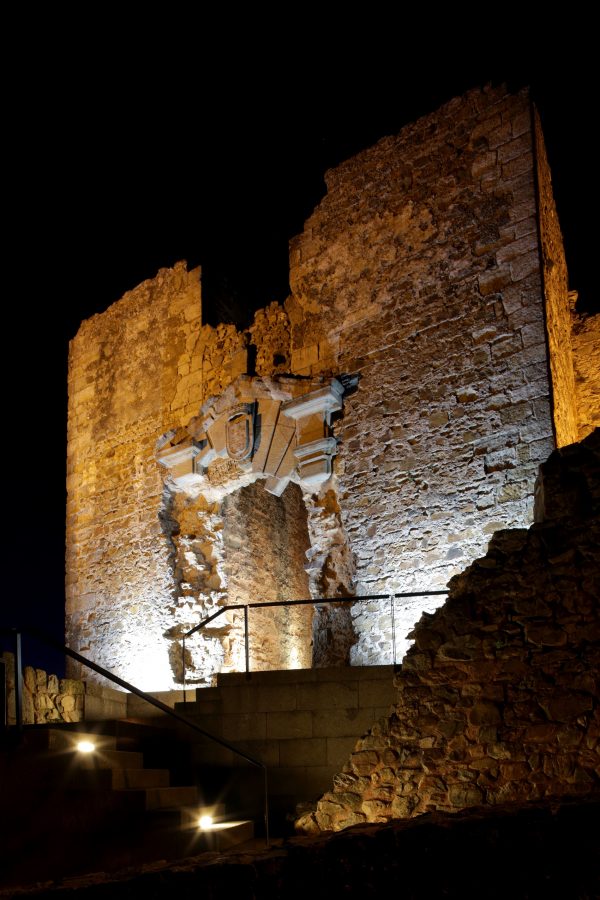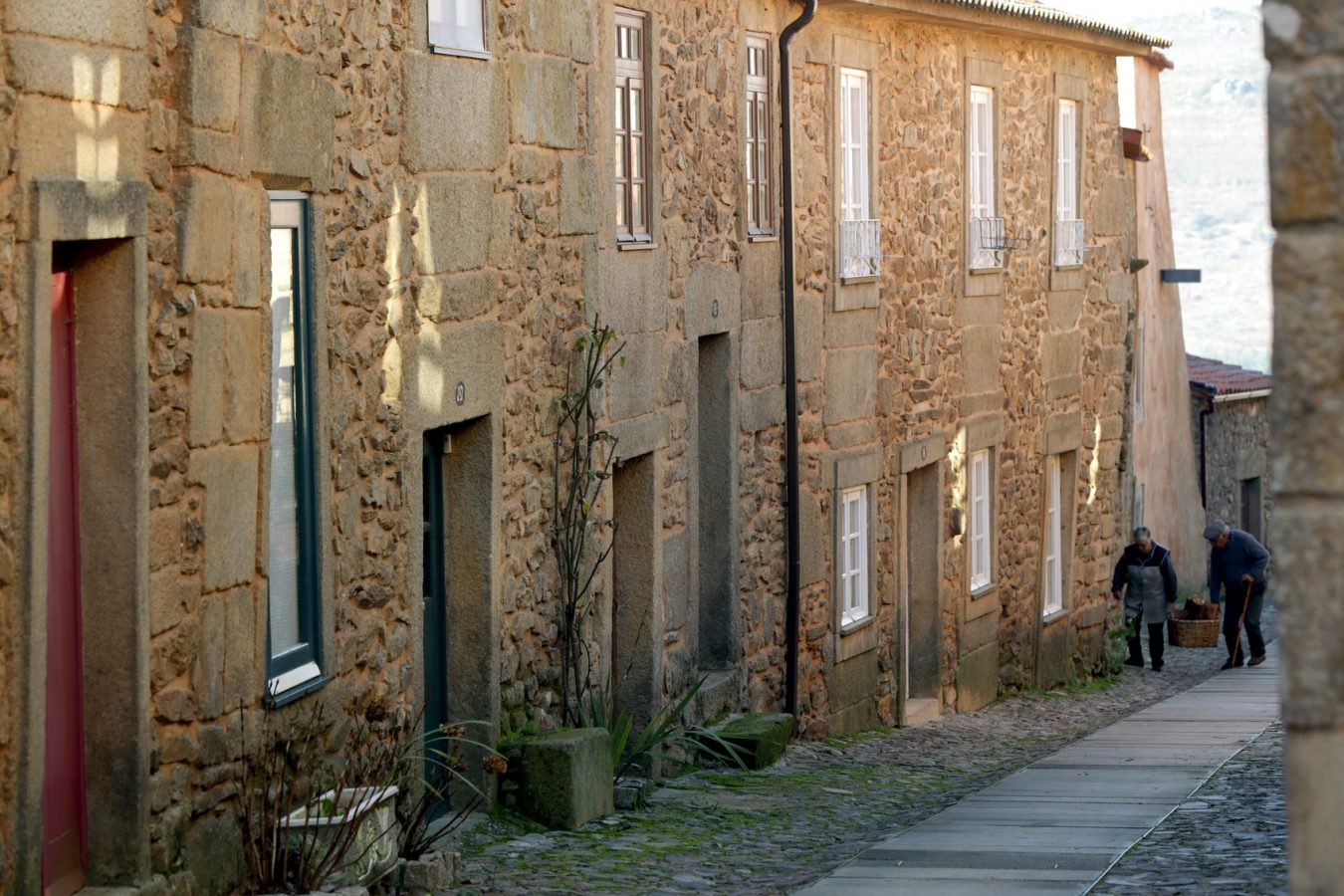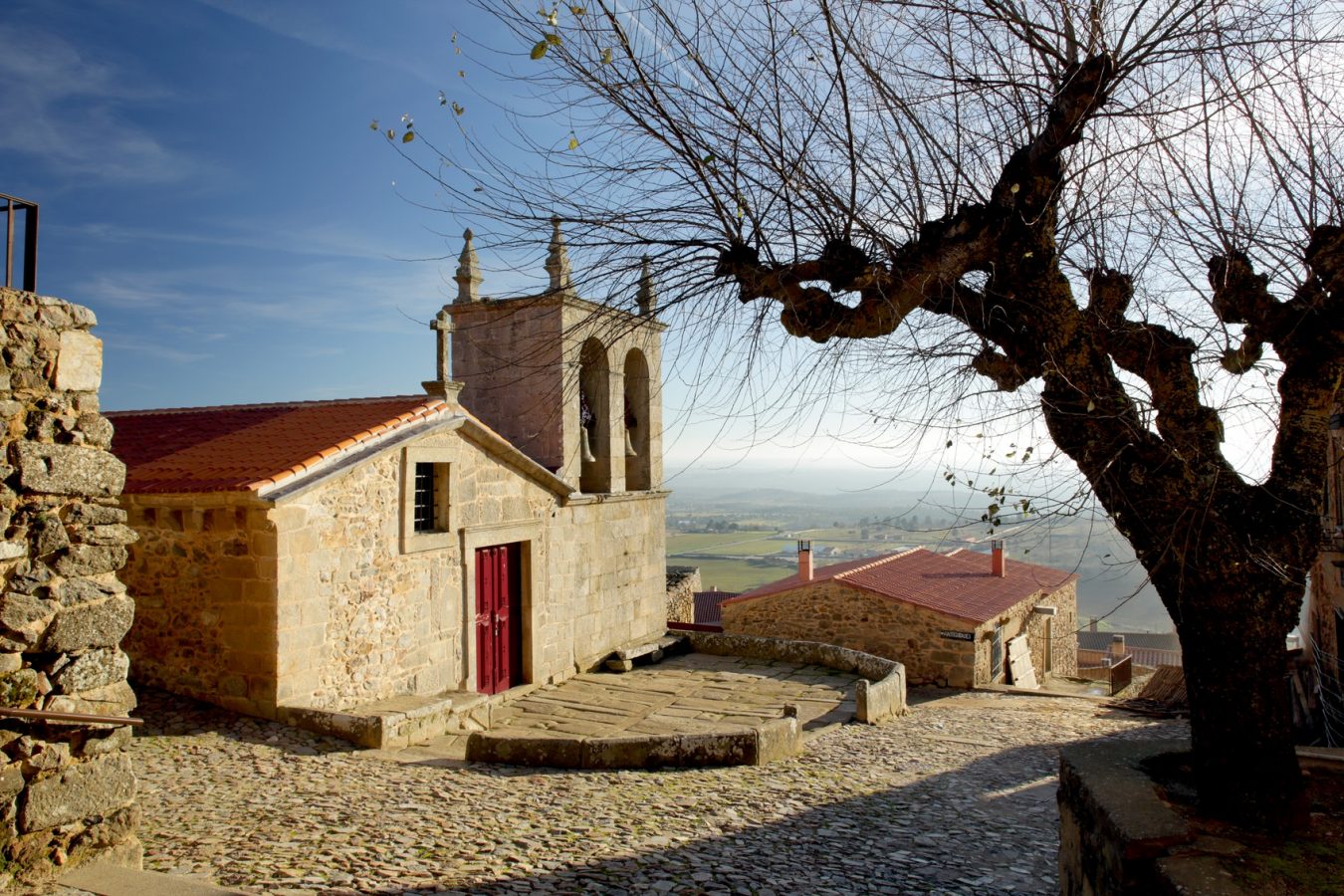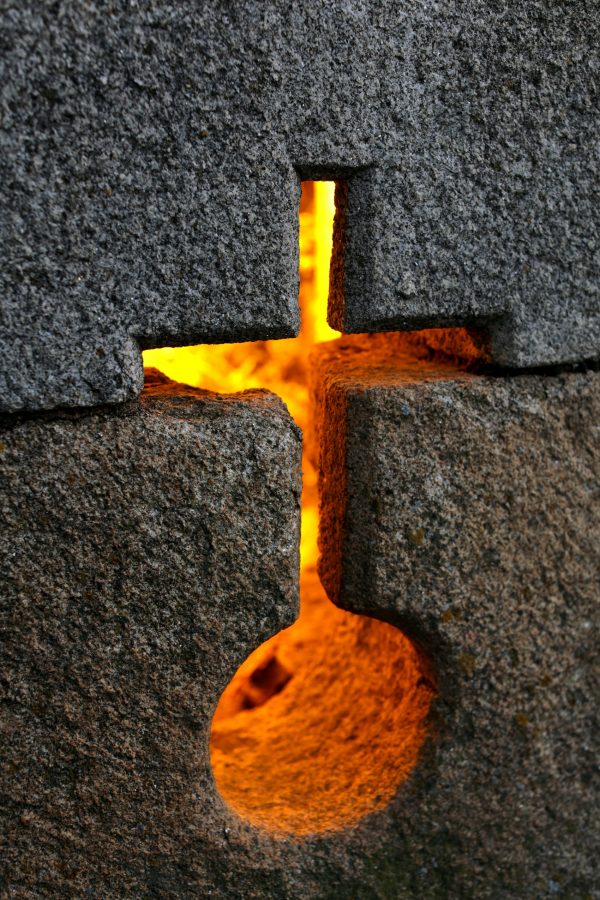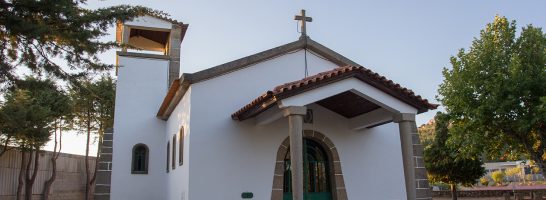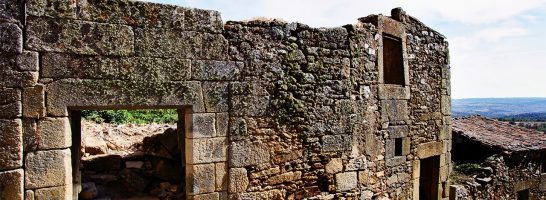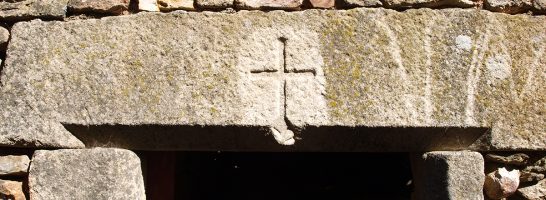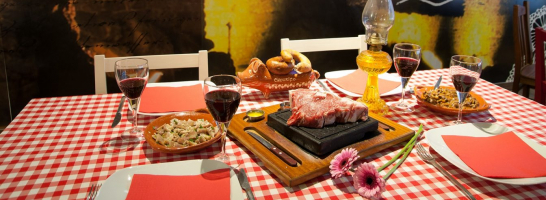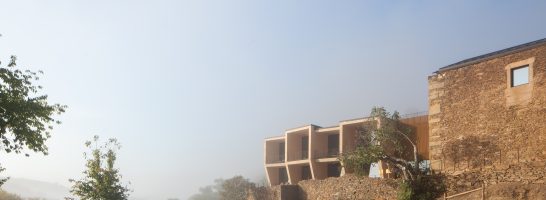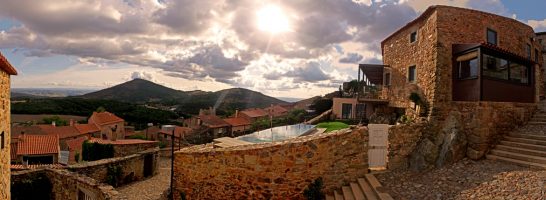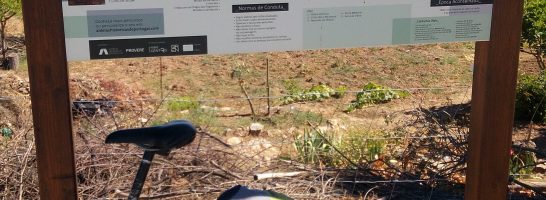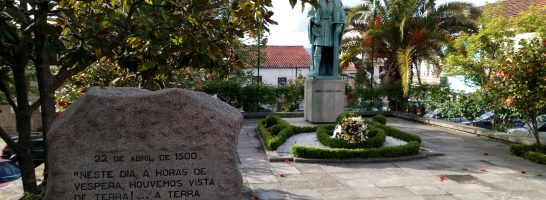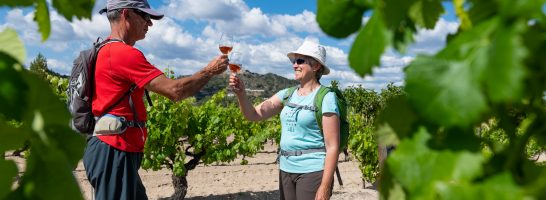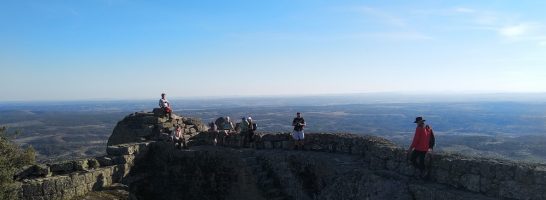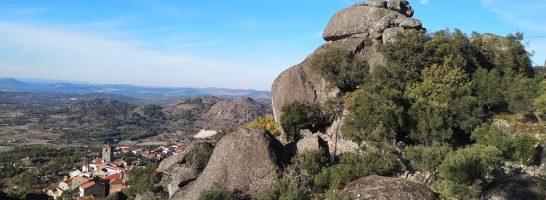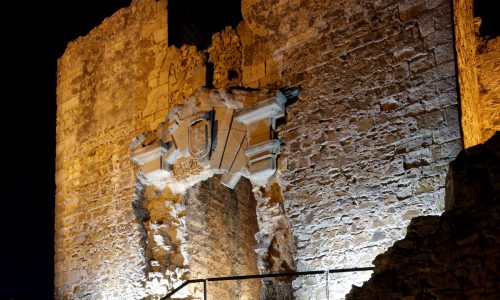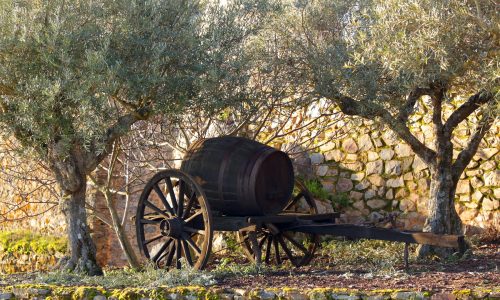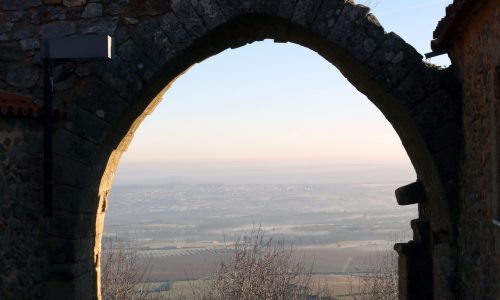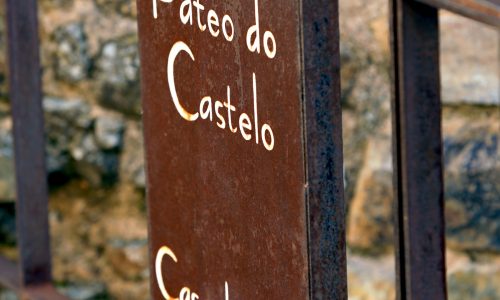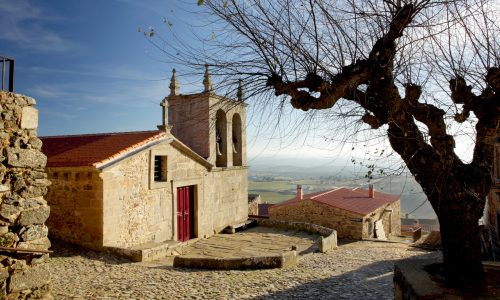Castelo Rodrigo
The historical village of Castelo Rodrigo as a whole is a genuine location of monuments preserving important medieval references. The most valuable features of its historical heritage are the old walls, the ruins of Cristóvão de Moura Palace, the 16th-century pillory, the medieval church, the parish church, the medieval cistern and inscriptions attesting to the existence of a substantial new-Christian community. For more than 600 years, Castelo Rodrigo was a town and municipal seat. More than once in the country's history, its inhabitants showed their courage and loyalty to the crown.
History
Our history your time
O território de Riba-Côa foi ocupado desde tempos remotos, havendo vestígios paleolíticos, megalíticos, da cultura castreja, romanos e árabes. A preocupação com a reorganização e povoamento desta área na época da Reconquista é patente nas doações aos freires Salamantinos, fundadores da Ordem de S. Julião do Pereiro, e aos primeiros frades de Santa Maria de Aguiar, oriundos de Zamora, de que o Mosteiro de Santa Maria de Aguiar, de fundação cisterciense do séc. XII, é importante testemunho. Conquistada aos Árabes no séc. XI e dependente do Reino de Leão, foi vila elevada a concelho por Afonso IX, integrando definitivamente o território português a 12 de Setembro de 1297, pelo Tratado de Alcanizes - assinado por D. Dinis, que confirmou o seu Foral em Trancoso e mandou repovoar e reconstruir o Castelo, ação repetida por D. Fernando I, que também lhe concedeu Carta de Feira, em 1373. Castelo Rodrigo está rodeado por uma cintura amuralhada inicialmente composta por 13 torreões (à semelhança de Ávila). Mantém a sua traça medieval, que irradia da alcáçova e acompanha a topografia. Pelas suas ruas encontram-se casas interessantes, umas manuelinas, outras construções árabes, como a casa nº 32, com inscrição e uma carranca, para além da cisterna, de 13 m de fundo, com uma porta em arco de ferradura e outra ogival. Estando na rota de peregrinos a Compostela, aqui se ergueu a Igreja de N. Sra. de Rocamador, fundada por uma confraria de frades hospitaleiros vindos de França no séc. XIII. Por ter tomado partido por Castela na crise de 1383-85, D. João I castigou Castelo Rodrigo, mandando que o seu brasão ficasse com as armas reais invertidas e a vila dependente de Pinhel. O pelourinho manuelino - de gaiola e grandes dimensões, atesta o poder municipal, regulamentado pelo foral novo de 1508, altura em que D. Manuel, o Rei Venturoso, mandou repovoar a vila e refazer o castelo. Sob domínio filipino instituiu-se o condado e marquesado de Castelo Rodrigo na pessoa de Cristóvão de Moura, que mandou edificar um Palácio. Após a Restauração este foi destruído pelo povo. No largo de S. João, o padrão assinala e comemora a restauração da independência nacional. Ainda nas lutas contra Espanha, a vila sofreu em 1664 o cerco do Duque de Ossuna, tendo a sua guarnição de 150 homens resistido heroicamente até à chegada de reforços, travando-se a batalha da Salgadela, junto ao Mosteiro de Santa Maria de Aguiar. Conta-se que o Duque de Ossuna e D. João d’Áustria escaparam disfarçados de frades. Após as Guerras da Restauração, Castelo Rodrigo foi perdendo a sua importância, e a 25 de Junho de 1836, por Carta Régia de D. Maria II, a sede de concelho foi transferida para Figueira de Castelo Rodrigo. Historicamente, nenhuma povoação raiana exerceu por tão longo período um lugar tão relevante nas relações Luso-Castelhanas e na defesa do território português.
What to see
Where sleep
What to do

Adventure and nature trips
We are a registered tour operating company and we base our activity on the values of legal compliance, nature protection and sustainability. We operate according to the Portuguese legislation and we hold a special accreditation from the Institute of Nature Conservation and Forests allowing us to drive inside Nature Parks and other protected areas (where permitted)- We are members of the Natural.pt brand (www.natural.pt), reserved for companies who adhere to the programme. Following the recent pandemic we got our Clean & Safe seal from the Tourism Authority signifying our compliance with the official health requirements for the prevention and control of infections. Our trips are much more than just going from A to B and we distinguish ourselves for having a higher purpose: the knowledge and promotion of the historical, cultural and environmental heritage of Portugal, so that in the end our guests will have lots of stories to tell. In each new journey through some of the most beautiful and remotest places in mainland Portugal, we discover a unique, authentic and truly surprising country with a sense of adventure and discovery that enriches us as human beings. Our offer is based on a personalised service with tailor-made trips meeting the personal interests of our guests. We are constantly exploring and spending countless days on the ground in contact with the local people and organisations in search for the best places of interest and the best routes. As a result of this research, we have acquired a deep knowledge of the whole country which allows us to give our guests a renewed level of novelty and differentiation in each event. During our events we privilege the contact with nature in a legal and responsible manner, with the aim to reduce the impact of our passage, by working with official entities and other environmental organisations. Every year we plant many autoctonous trees in an effort to make Dream Overland a carbon-neutral company, an action that our customers can support and partake in. With our trips we contribute to the social cohesion and economic sustainability of local communities, through the knowledge and promotion of their traditions, handicrafts, produce and local heritage.



